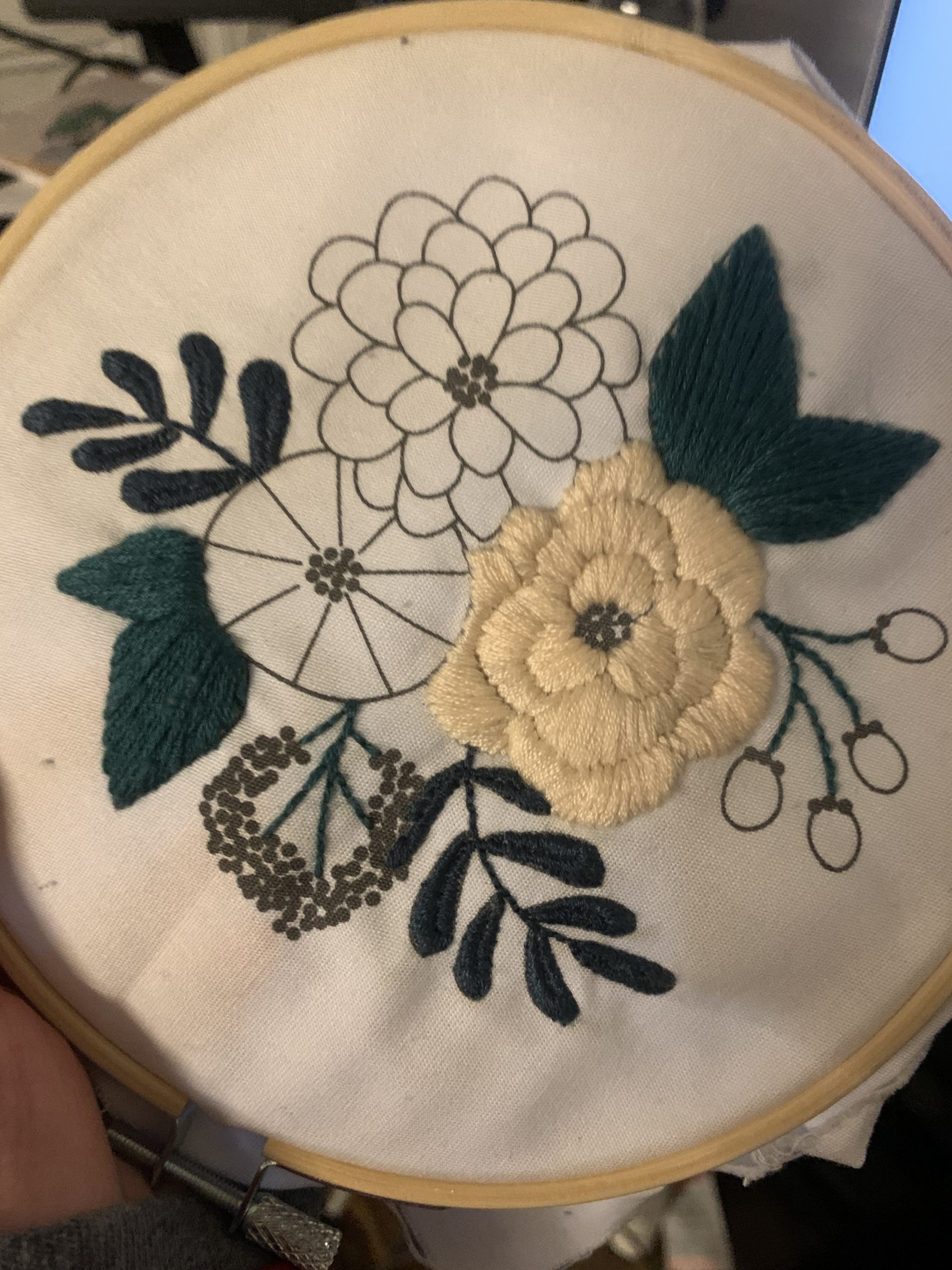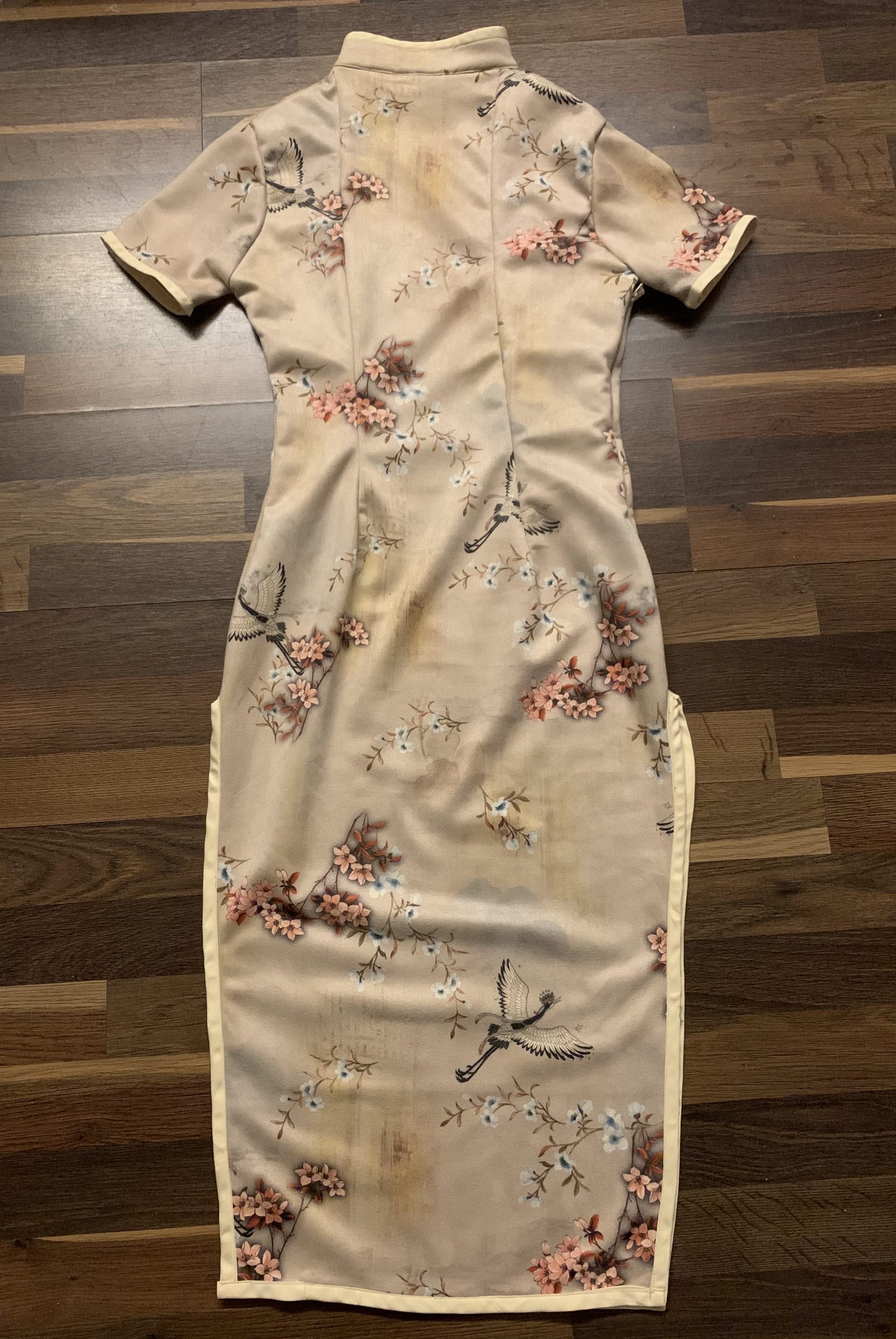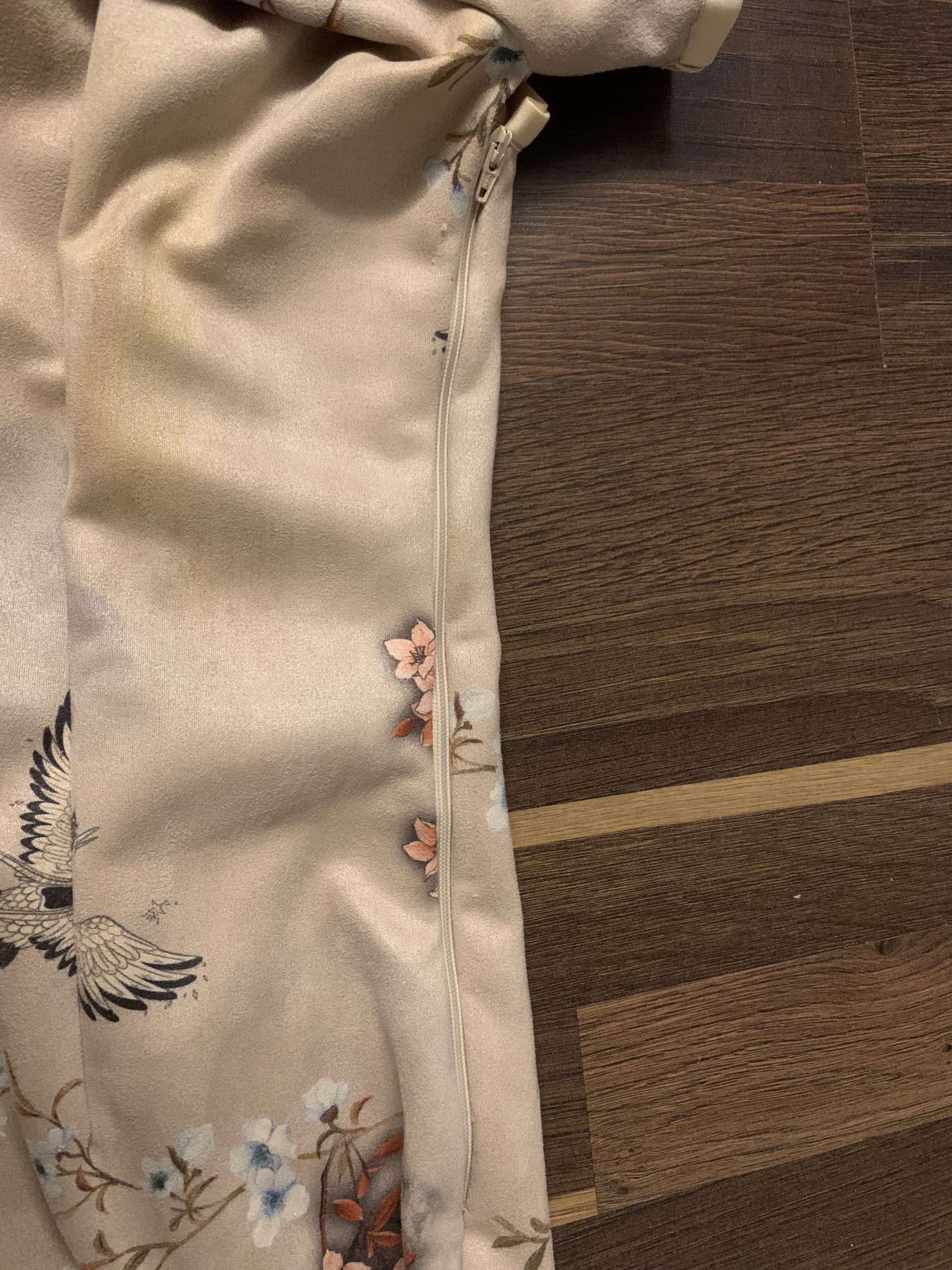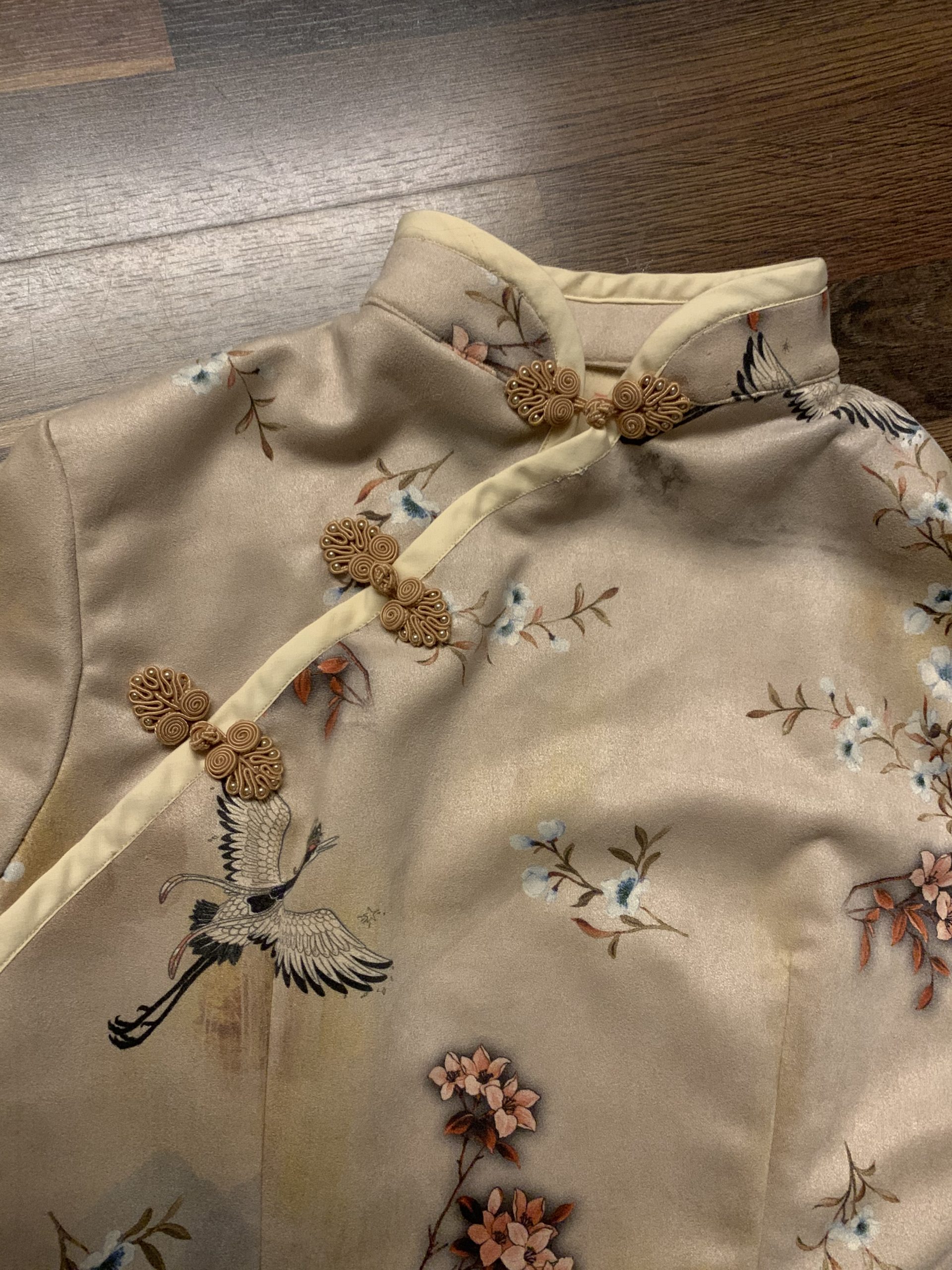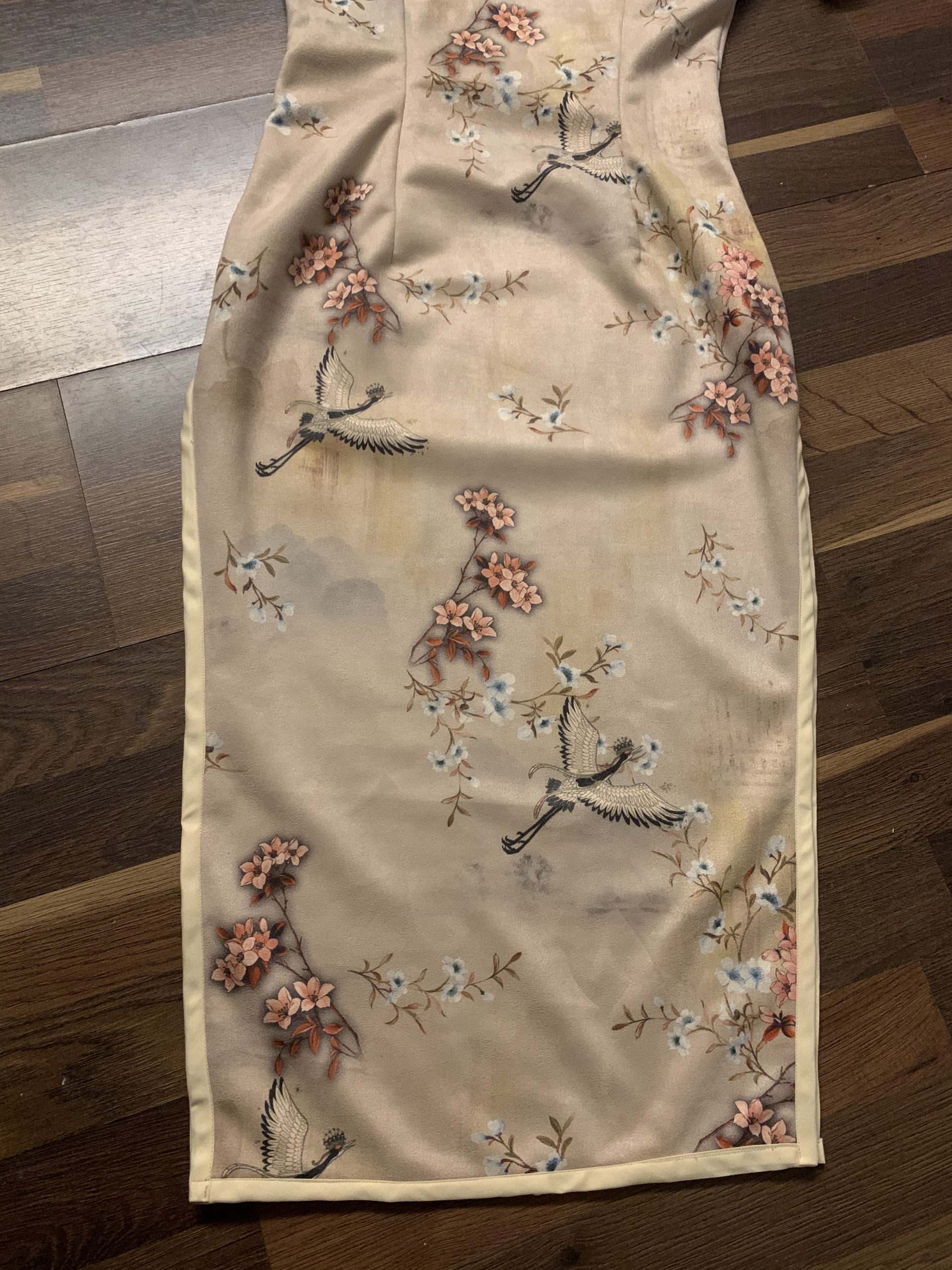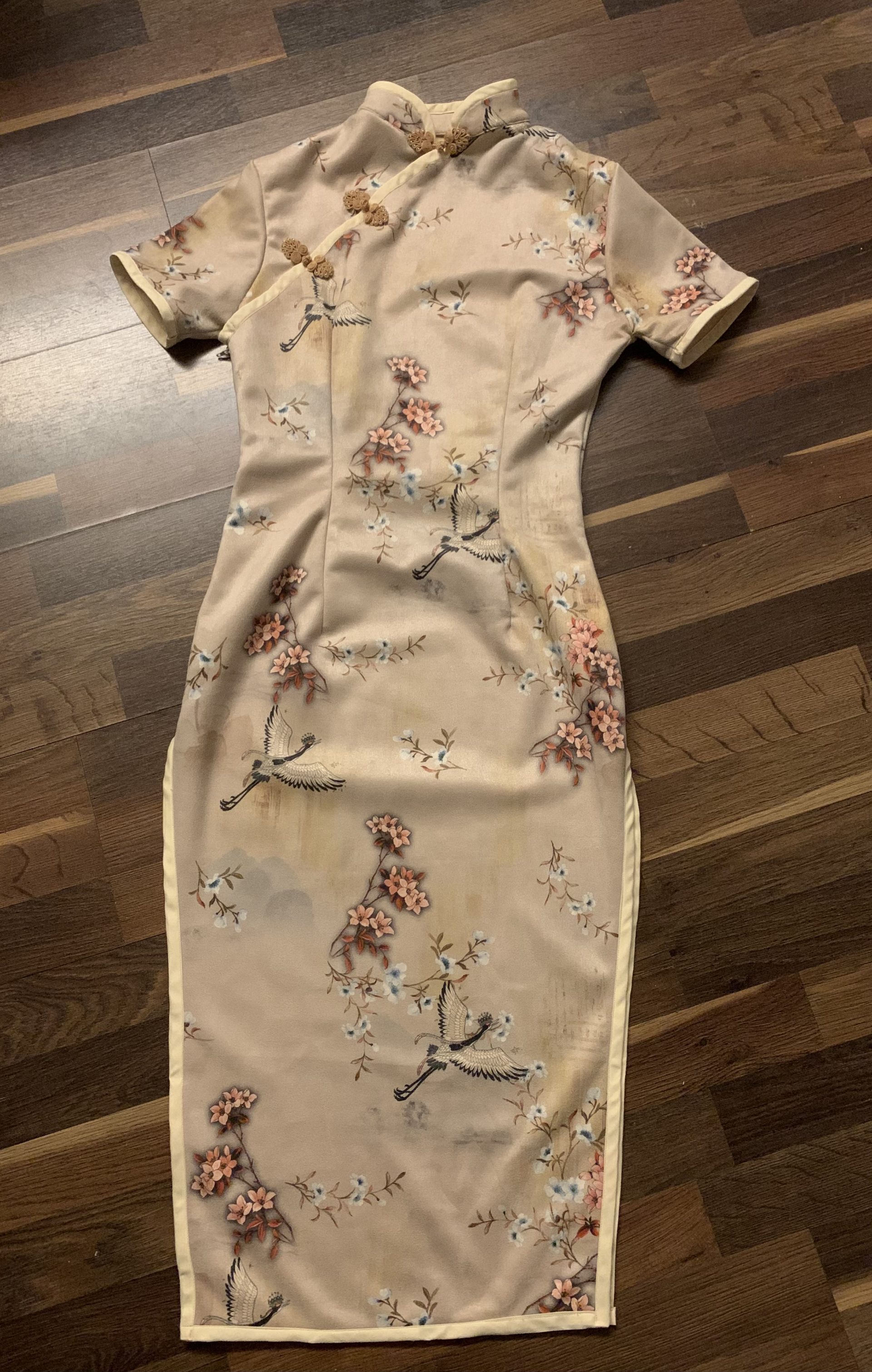Intended effects:
I wanted to make a more traditional long qipao where the zipper is on the side, the pattern is symbolic, tight-fitting, and has two slits on the bottom. I also wanted to do embroidery on the qipao so that the birds and flowers could stand out.
Challenges:
I referenced my previous sewing patterns to sew this qipao. However, because I want to make the qipao have more traditional elements, a challenge I had was remaking the patterns to reflect those elements. The slits and zipper on the side were extremely hard to put together at first. They also impacted many other parts of the qipao. For example, putting the zipper on the side makes it harder for the wearer to put their head through. To tackle this, I first increased the size of the collar area so that a head can fit through. However, after putting the collar and front pieces together, I realized that it is too big. I then decided to cut the collar smaller and change the curve of the bias tape area in the front to tuck in the extra bias tape that I used on the collar.
Another challenge I had was making the qipao tight fitting and adding darts. Because the fabric is really thick and stretchy, it causes a lot of large and visible wrinkles when making the darts. I also tried doing hand embroidery using the kit I got from Walmart. However, due to time constraints and the fear that the fabric would break after poking it with a needle too many times, I decided to not do embroidery.
Successes:
Overall, I think the qipao turned out well and it fits on my body. Although there were a lot of challenges, I was able to learn a lot through the process. My biggest takeaway was being able to reference an existing pattern (the pattern I made last semester) and adjusting things to make the changes I wanted. Another big takeaway is being able to learn how the different pieces of a garment can interact with each other and what strategy to use for the best outcome. Other than the structural changes, I also changed a lot of the techniques I used to sew. For example, in the more modern qipao, I made the collar first, flipped it inside out, added bias tape and then sewed it onto the garment. However, this time, I decided to cut and put together the collar (without flipping it inside out) and then sewing it to the garment where the garment (front/back pieces) are placed inside of the collar so that the seam allowance is not visible. And then I added bias tape all together.

